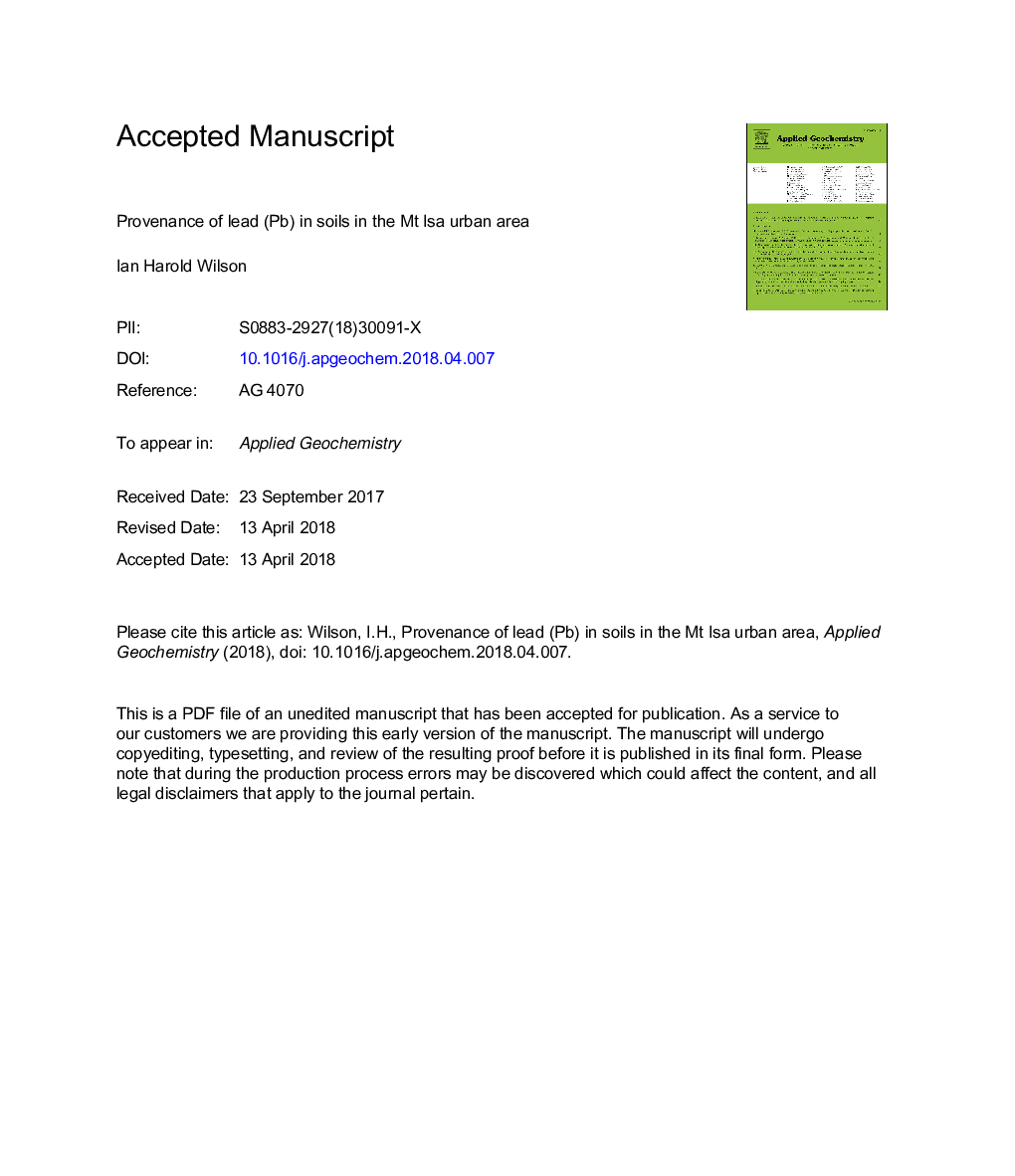| Article ID | Journal | Published Year | Pages | File Type |
|---|---|---|---|---|
| 8863105 | Applied Geochemistry | 2018 | 74 Pages |
Abstract
This paper integrates more than 50 years of geological, geochemical and environmental research relevant to the Pb content of soils in Mt Isa to clarify the role of soil as a potential pathway for Pb exposure to local residents. Most of Mt Isa is underlain by thin residual soils that formed by weathering of the Proterozoic Mt Isa Group (MIG). The MIG contains carbonate and volcaniclastic sedimentary rocks largely derived from contemporaneous and earlier cycles of igneous activity and minor detritus from an Archean basement. The upper part of the MIG contains stratiform Pb ore deposits that are about 1650 Ma old. Deformation and erosion have exposed these rocks to weathering and soil forming processes several times since the Proterozoic, with the current landform developing over the last 20 Ma. Soil formation has generally depleted Pb from the subsoil and enriched the top soil. Pb has been widely distributed to the northwest and north of the city in wind-blown dust and water runoff from outcrops of oxidised ore for millions of years. Additional Pb emissions from smelting commenced at Mt Isa in 1931. Most of the urban area receives 50-100â¯mg/m2/yr of Pb from dust deposition and some of this is resuspended or washed away. Additional Pb in mine waste rock and contaminated river sand was brought into the residential area as fill or for sandpits. The Mt Isa community is exposed to Pb in air at levels regulated to minimise health effects of inhalation and ingestion. The observed Pb levels in air generally correlate with distance from the mine but not with the distribution of children with elevated blood Pb levels. Geological evidence of anomalous soil Pb derived from underlying layers of mineralised rock may partly explain the observed blood Pb distribution.
Related Topics
Physical Sciences and Engineering
Earth and Planetary Sciences
Geochemistry and Petrology
Authors
Ian Harold Wilson,
